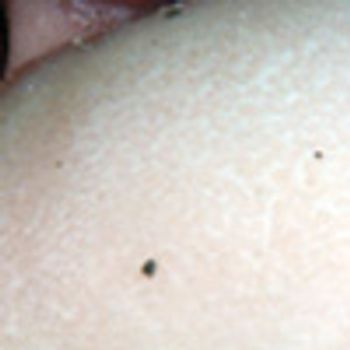
This 8-year-old boy's mother thought her son had a fungal infection on his feet. Examination disclosed malodorous, nontender plaque formation on the weight-bearing surfaces of both feet. Within the plaques were round pits and furrows.

This 8-year-old boy's mother thought her son had a fungal infection on his feet. Examination disclosed malodorous, nontender plaque formation on the weight-bearing surfaces of both feet. Within the plaques were round pits and furrows.

Although many lacerations are treated in the emergency department, primary care clinicians still see their share of such wounds. Most lacerations are incurred on the face and head (as a result of falls or altercations) or on the hand or lower arm (caused by tools, broken glass, or other sharp objects).

ROCKVILLE, Md. -- Afluria was approved today by the FDA as the sixth seasonal influenza vaccine on the U.S. market. Manufactured by Australia's CSL Limited, the company will produce about two million doses for this year's flu season.

SEATTLE -- There is something about farming, nursing, and teaching that seems to predispose those who work at these professions to death from systemic autoimmune diseases, reported investigators here.

MILWAUKEE -- A Clostridium difficile infection sharply increases the risk of death for patients with underlying inflammatory bowel disease, researchers here said.

CHICAGO -- The incidence and economic burden of hospital-acquired Staphylococcus aureus infections have increased significantly in recent years, investigators here have concluded.

ATLANTA -- Children who were given thimerosal-containing vaccines a decade ago showed no causal decline in neuropsychological outcomes by ages seven to 10, CDC researchers here found.

WASHINGTON -- Influenza vaccination may save many fewer older patients' lives than generally claimed, according to researchers here.

ATLANTA -- Influenza vaccination rates have not rebounded after widespread vaccine shortages in the 2004-2005 flu season, CDC investigators said.

SAN FRANCISCO -- In another setback to the effort to create a preventive vaccine against HIV, a key trial has been halted because of a lack of efficacy, according to Merck and the HIV Vaccine Trials Network.

CHICAGO -- Rubella vaccination reduces the risk of Fuchs heterochromic iridocyclitis (FHI), investigators here reported, providing additional support for a link between rubella virus infection and inflammation.

CHICAGO -- A gene that allows micro-organisms to resist the carbapenem antibiotics -- first seen in New York -- is spreading to the Midwest, a St. Louis researcher said here.

CHICAGO -- Infants vaccinated against pertussis at birth have a powerful immune response that outstrips the immunity seen in babies vaccinated on the normal schedule, a researcher said here.

CHICAGO -- Statins, widely used for their anti-cholesterol properties, also appear to have anti-microbial and anti-fungal properties, researchers said here.

ROCKVILLE, Md. -- The FDA said bottles of Baby's Bliss Gripe Water, which is marketed as a remedy for "colic, hiccups, and teething," may be contaminated with a parasite that causes severe diarrhea.

ROCKVILLE, Md. -- The FDA has expanded the indications for FluMist, a nasal influenza vaccine, to include children ages two to five.

BETHESDA, Md. -- The etiology of the rare immune system disorder hyper-IgE syndrome, or Job's syndrome, tracks to mutations in a gene involved in signal transduction and transcription activation, investigators here reported.

CHICAGO -- Immunization with Gardasil, a vaccine designed to prevent infection with human papilloma virus types 6, 11, 16, and 18 may also offer women significant protection against so-called "cousins" of those viral strains, reported researchers here.

CHICAGO -- As clinical data accumulates, researchers are gaining confidence in a drug that blocks HIV from entering its target cells.

CHICAGO -- America's day care centers -- long thought to be a kiddy-pool of pathogens -- are safer than ever thanks to new vaccines, researchers said here.

This MedPage Today video features senior staff writer Michael Smith sitting down with Larry Pickering, M.D., an infectious diseases specialist at the CDC, and Janet Englund, M.D., of the University of Washington in Seattle, to discuss America?s day-care centers and how new vaccines attribute to a safer environment.

CHICAGO -- The experimental integrase inhibitor elvitegravir induces a swift reduction in HIV levels but needs an optimized background regimen, researchers emphasized.

CHICAGO -- An antibody that blocks HIV entry to its target T-lymphocytes was found to be well tolerated and effective in the first study to test its activity in humans.

CHICAGO -- When it comes to curing TB quickly, it may be better to be a mouse than a man. Researchers here say a regimen that speeded cures in mice was not much better than standard therapy in people.

LOS ANGELES -- Internet sites that compare surgical care at various hospitals were often inaccessible and frequently displayed inconsistent results, inappropriate quality measures, and out-dated information, researchers reported.